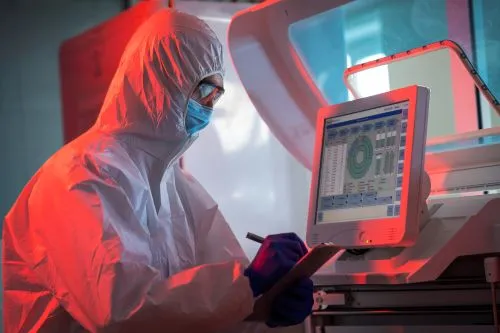
Food Fraud Is on the Rise — How Is the Industry Fighting Back?
A growing threat to public health
Counterfeit food and drink products are increasingly infiltrating global markets, posing a serious threat to public safety. In a recent analysis, FoodNavigator explored what the food industry is doing to combat this growing concern.
A Global Issue
Food fraud is a global problem — and it's getting worse. That’s according to the 2025 Food Fraud Vulnerability Index, published by WellnessPulse. While all countries are exposed to some extent, certain regions and product categories are more severely affected than others.
Countries facing food insecurity, weaker regulatory systems, and insufficient oversight are especially vulnerable to food fraud. The index shows that seven of the ten most affected countries are in developing parts of Africa, while the other three are conflict zones in the Middle East.
By contrast, Finland is considered the least vulnerable country due to its advanced technology and extremely low levels of corruption.
However, even wealthier nations are not immune. The European Commission estimates that food fraud causes economic damages of €8 to €12 billion annually across the EU.
Countries Most at Risk of Food Fraud:
- Yemen
- Côte d'Ivoire
- Sierra Leone
- Chad
- Benin
- Syria
- Guinea
- Jordan
- Madagascar
- Egypt
Countries Least at Risk:
- Finland
- Australia
- South Korea
- United States
- Norway
- Japan
- Canada
- Denmark
- Israel
- Austria
High-Risk Food and Drink Products
While a variety of food and beverage products are vulnerable to fraud — including beer, wine, spirits, grains, and nuts — some items are targeted more frequently due to their high economic value and ease of adulteration.
Most at-risk products:
- Olive oil
- Honey
- Coffee
Other common targets include:
- Fish and seafood
- Meat
- Dairy products
- Spices
- Cocoa
- Tea
What Is Being Done to Fight Food Fraud?
Governments and industry stakeholders are investing substantial resources to combat food fraud — not only due to the financial impact, but also because of the serious public health risks it poses.
Some efforts have led to significant breakthroughs. For example:
Operation Sativus (2019)
This international investigation revealed a major saffron fraud scheme, a high-value spice often adulterated for profit. A cross-border collaboration between the UK and Spain uncovered 87 kg of adulterated saffron worth €783,000, leading to criminal charges against two individuals.
Operation OPSON XIII (2023–2024)
This major operation involved Europol and 29 European countries. It targeted counterfeit and substandard food and drink products, resulting in the seizure of 22,000 tonnes of fake food and 850,000 liters of fake alcohol — with an estimated value of over €91 million.
Key results:
- 11 criminal networks dismantled
- 104 arrest warrants issued
- 278 individuals referred to judicial authorities
- Notable cases: adulterated olive oil, mislabelled tuna, and expired food repackaged with fake date labels
Despite these successes, the rising number of new fraud cases highlights the ongoing challenge and the need for enhanced enforcement.
The EU’s Response
The European Union has stepped up efforts to combat food fraud by:
- Establishing cooperation systems to share information among Member States
- Developing a legal framework to help identify and prosecute food fraud
- Supporting consumer protection initiatives
However, legal disparities among countries remain a major obstacle. The definition and legal consequences of food fraud vary depending on national legislation, and on how severe a case is judged to be.
“In some instances, it’s treated as an administrative issue, while in others — especially those involving organized crime or endangering lives — it’s treated as a criminal offense,” says Lauryna Nelkine, Head of Health Research at WellnessPulse.
Confirmed cases can result in arrests, seizure of food, money, and documents, and significant financial penalties.
Fraud Is Getting Harder to Detect
“The food fraud problem continues to grow as Europe’s supply chains become increasingly complex and globalized,” Nelkine warns.
External pressures such as climate change and geopolitical instability also threaten food security, giving criminals more opportunities to exploit vulnerabilities.
At the same time, fraudsters are using more sophisticated technology, including molecular-level adulteration, which often outpaces current laboratory detection capabilities — or requires prohibitively expensive testing methods.
Organized criminal groups also run highly coordinated schemes, helping them stay one step ahead of enforcement efforts.
What More Can Be Done?
The 2025 Food Fraud Vulnerability Index suggests several key strategies for improving global resilience:
- Enhancing ingredient controls and certification processes to detect fraud at every stage of production and distribution
- Filling gaps in food safety and authenticity information, especially for emerging industries and novel ingredients
- Increasing risk-based inspections and building more efficient monitoring systems
- Boosting collaboration with food safety and food processing experts
- Using data-driven models and advanced technologies like blockchain and AI to improve traceability, automate detection, and predict food fraud incidents




